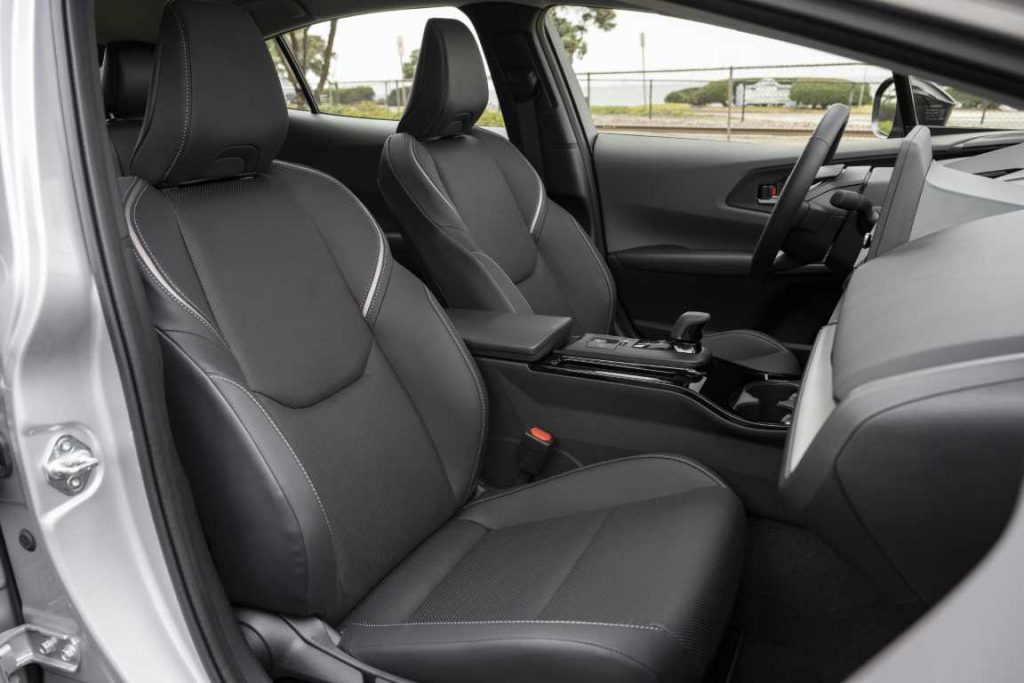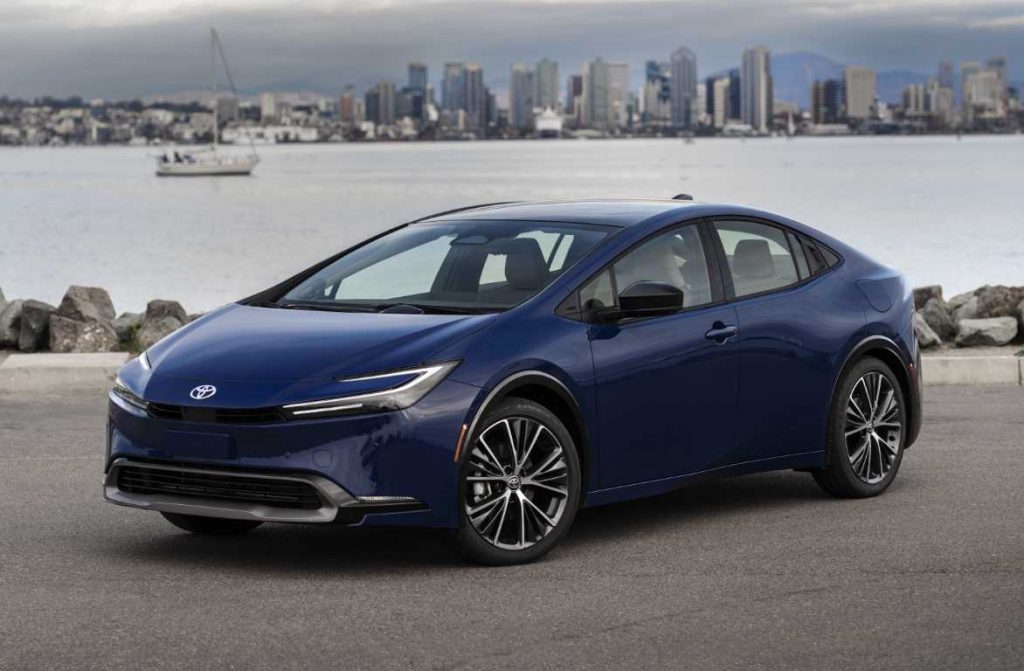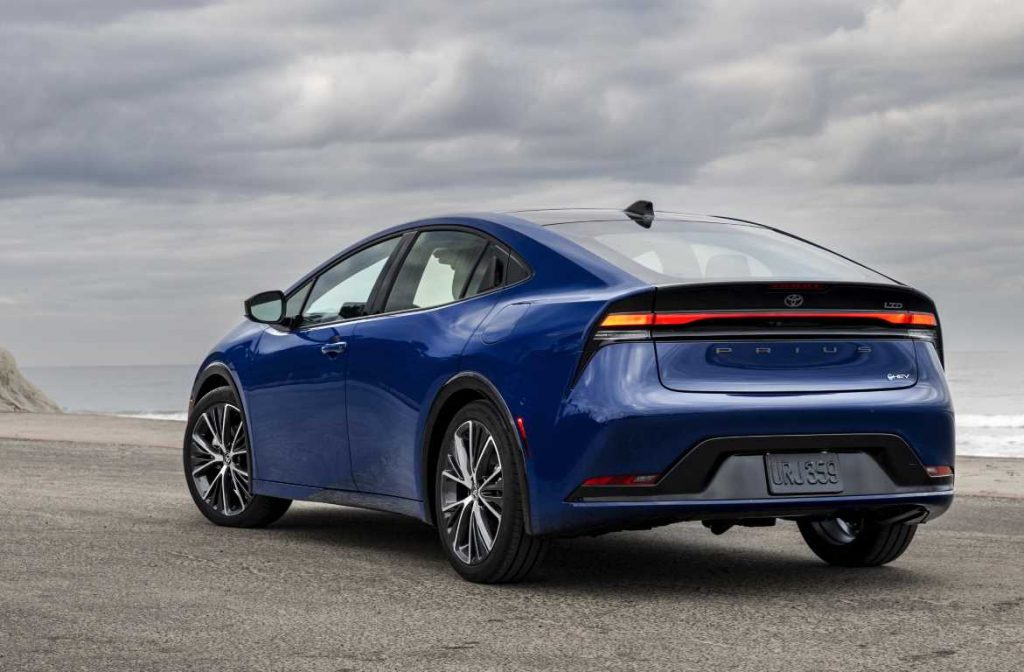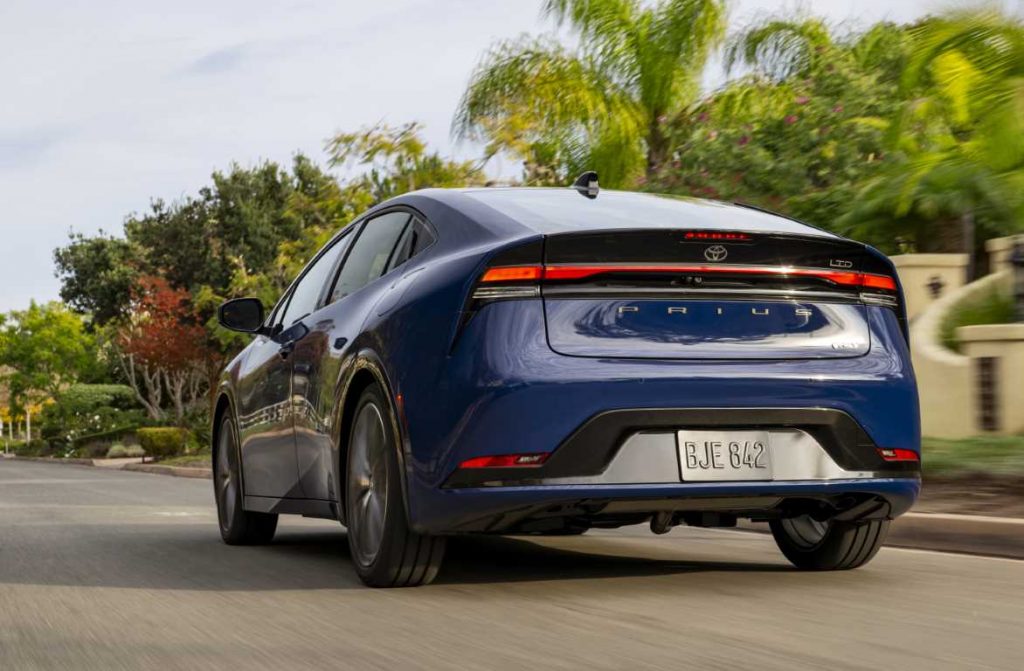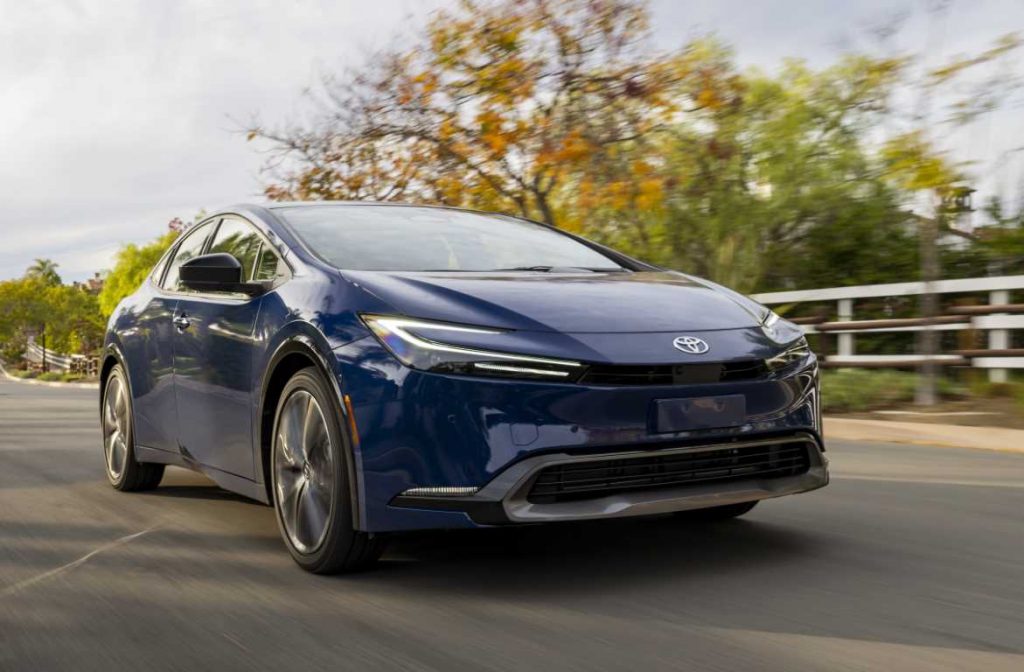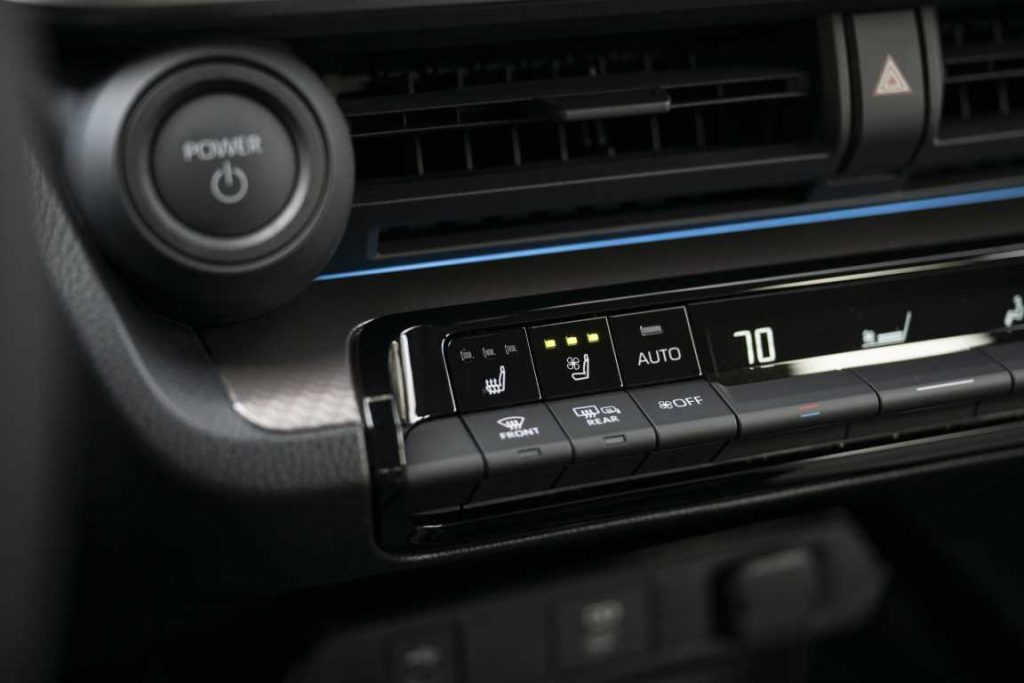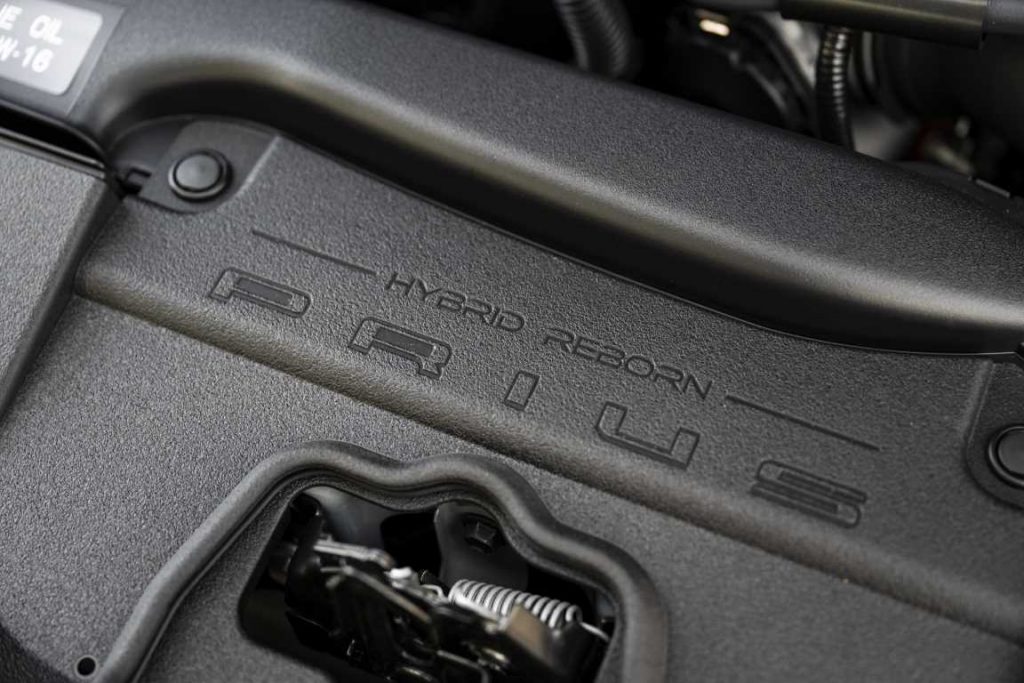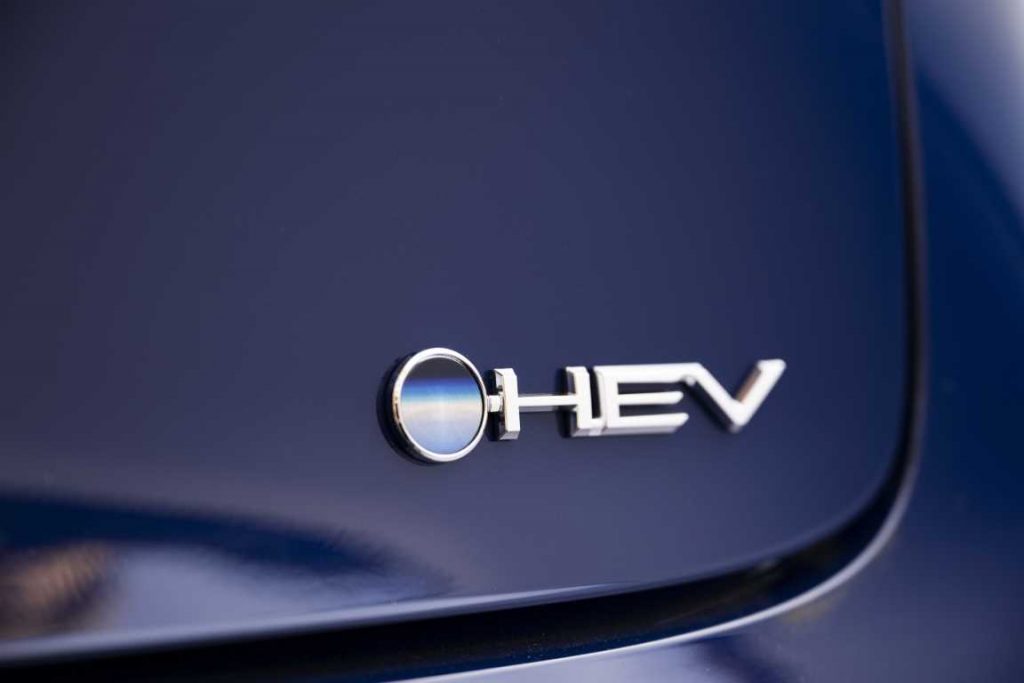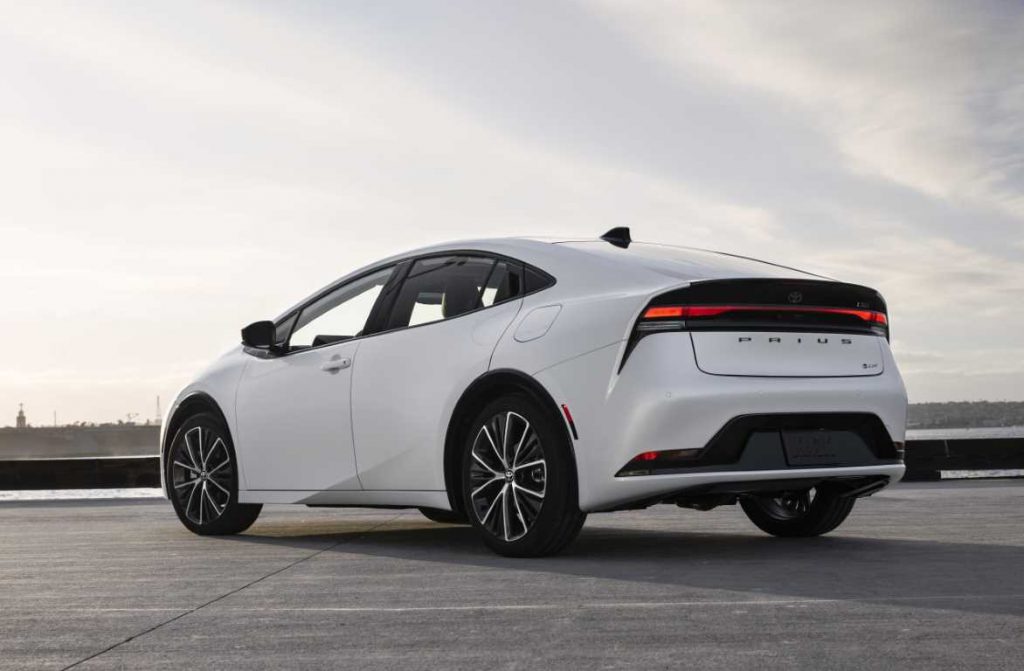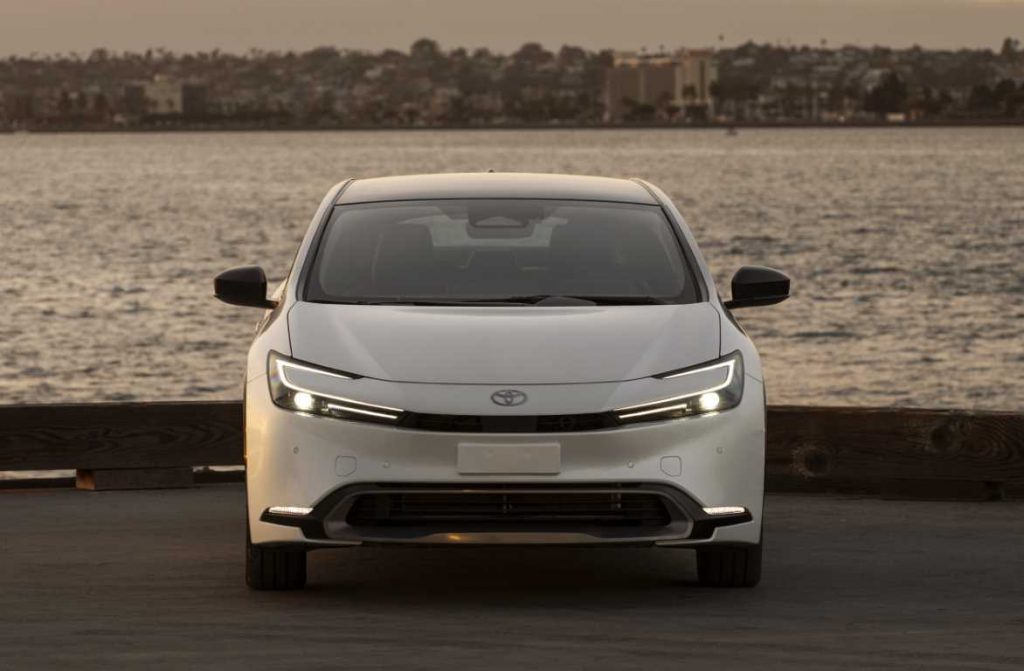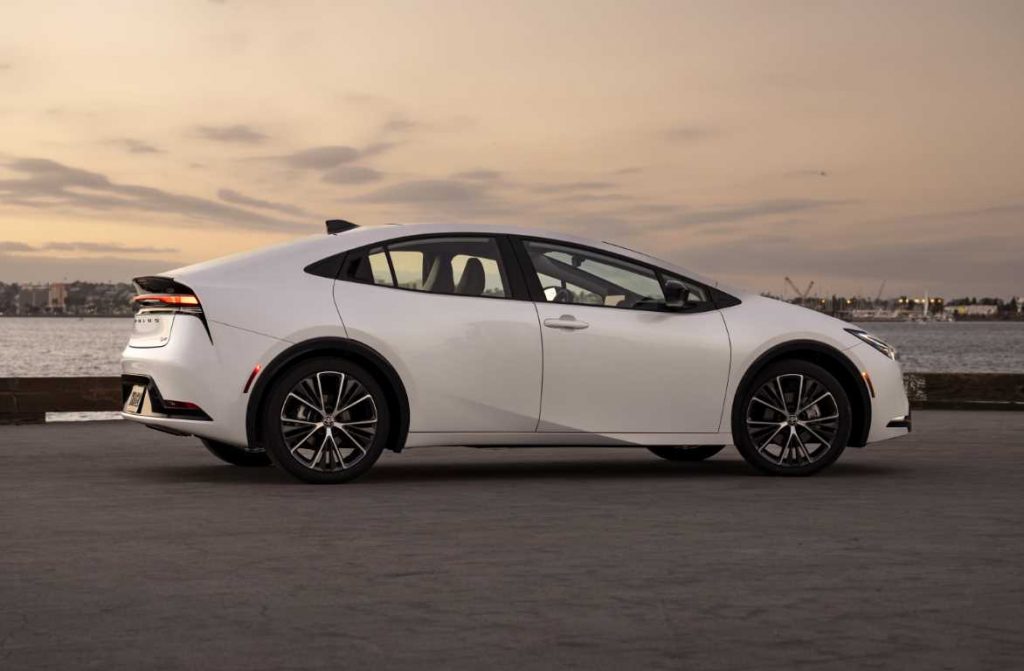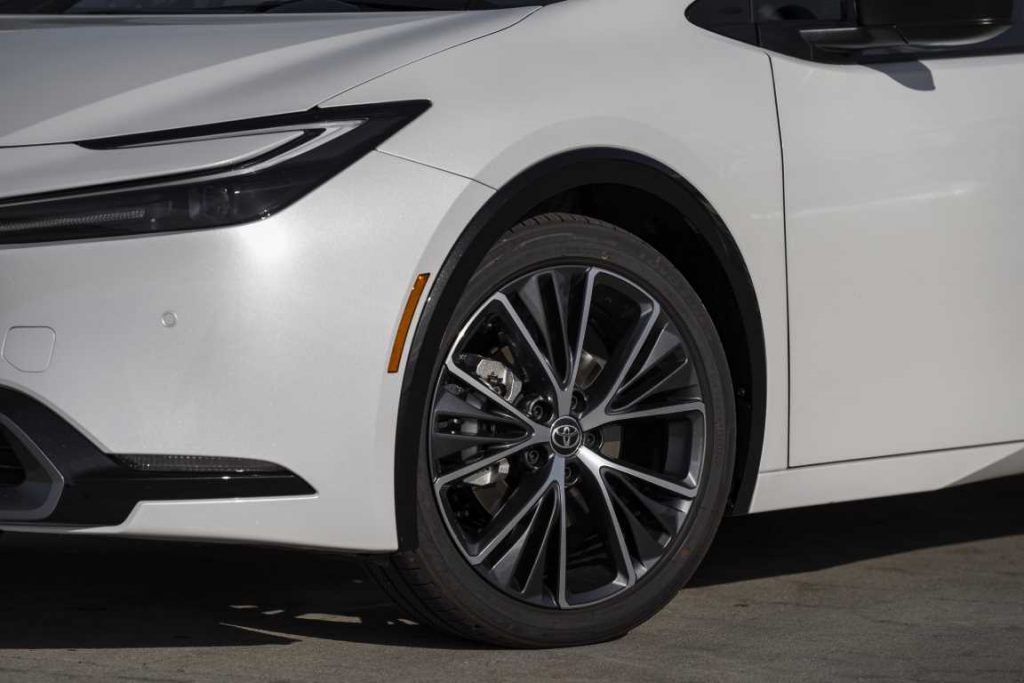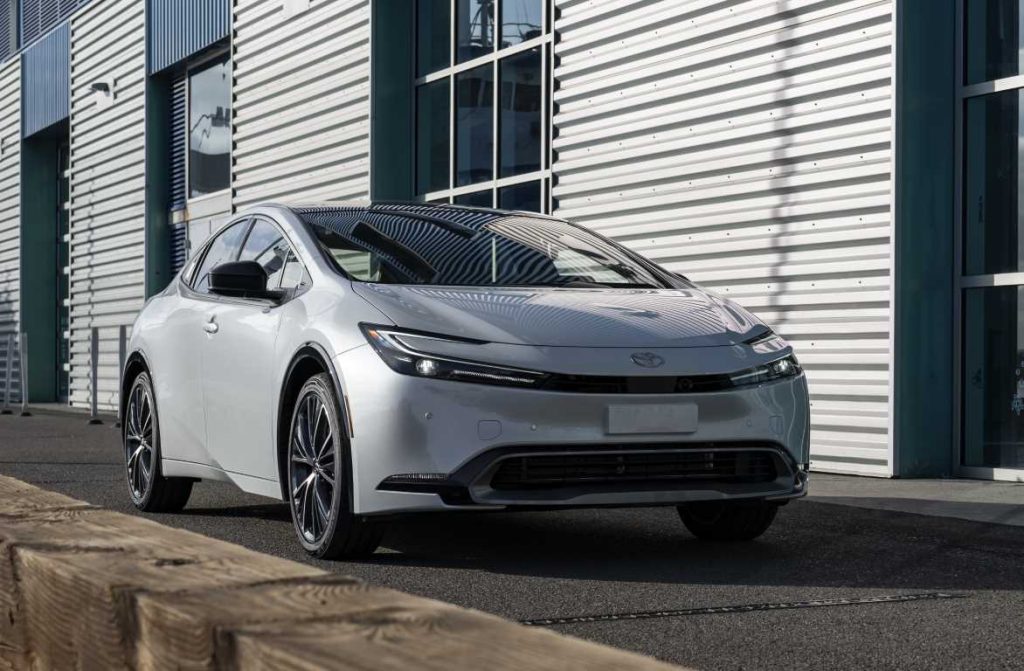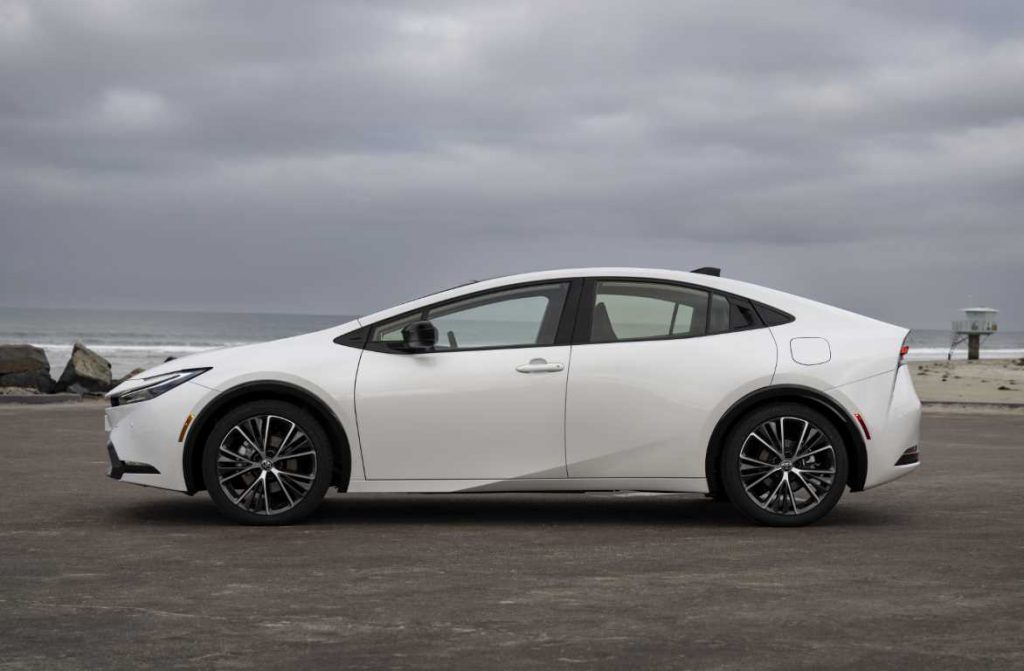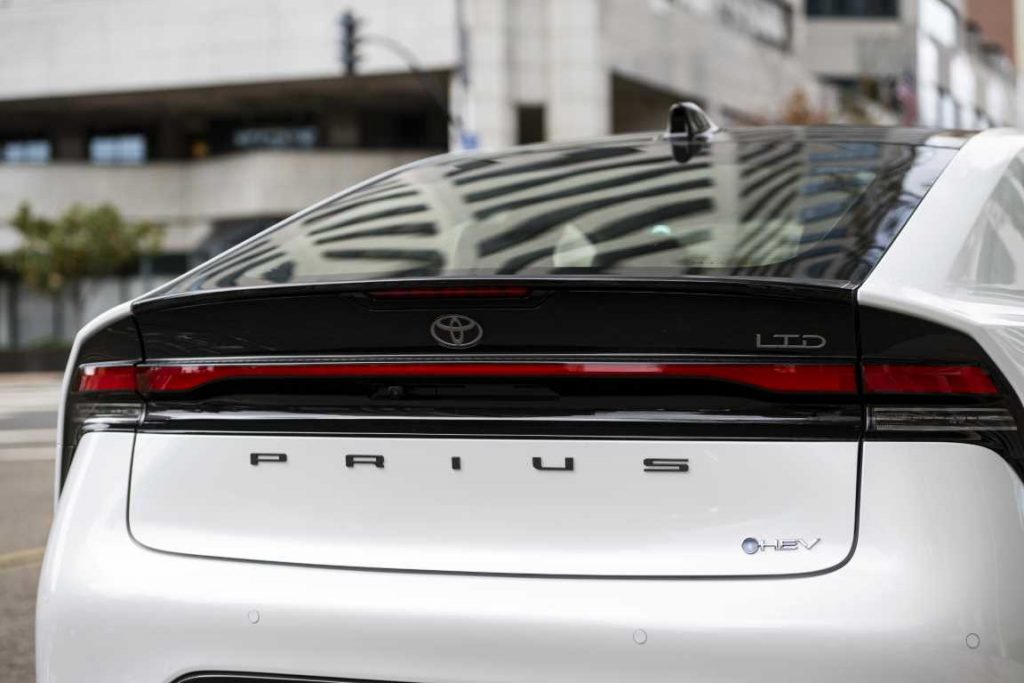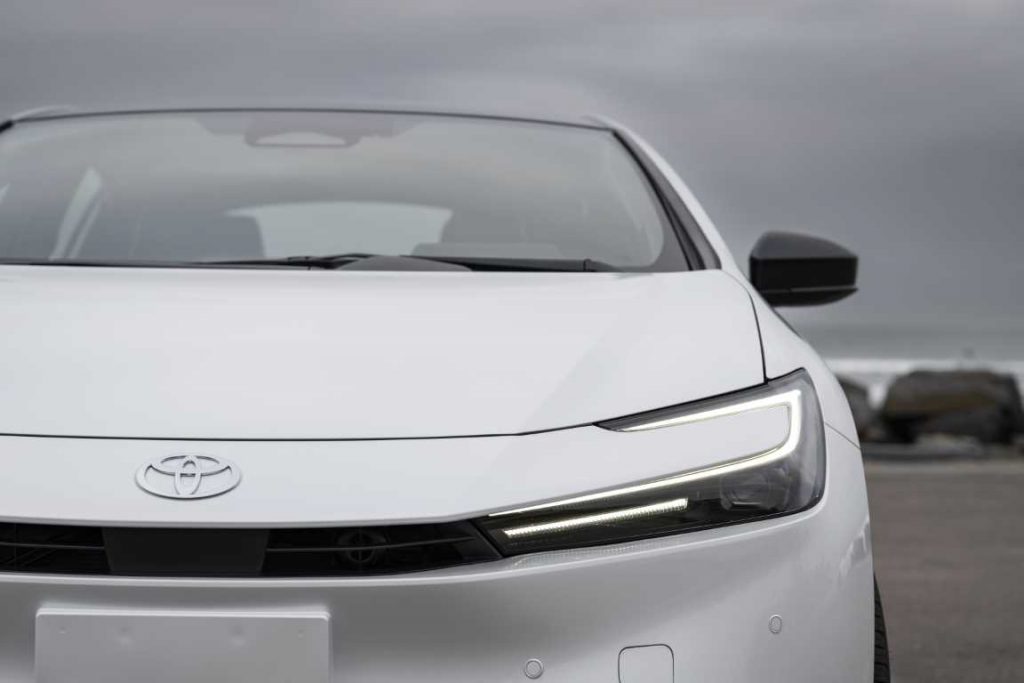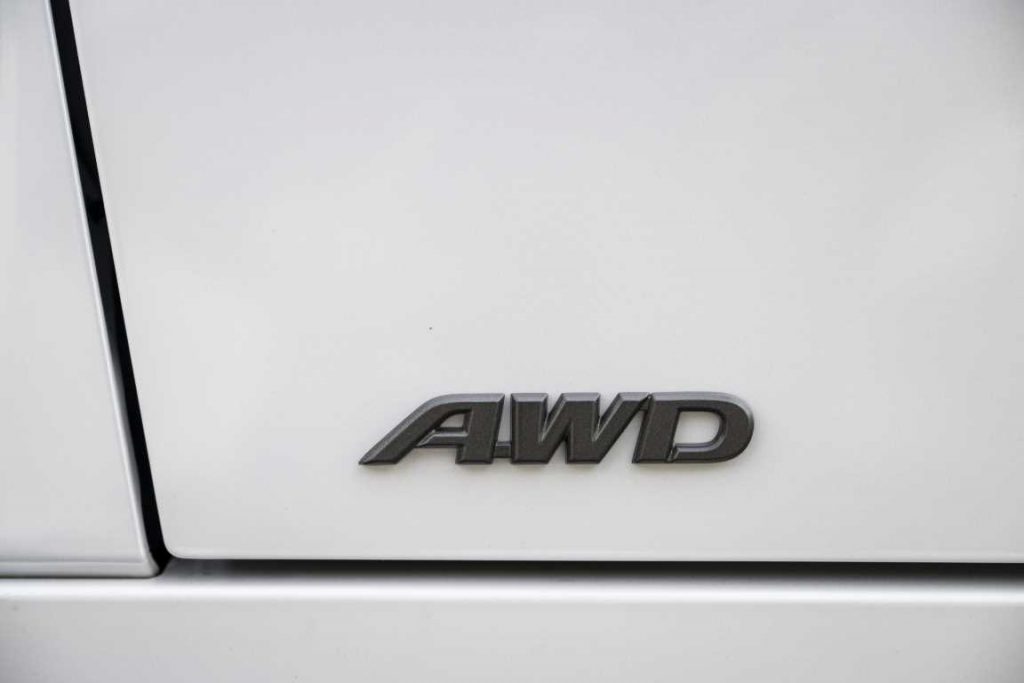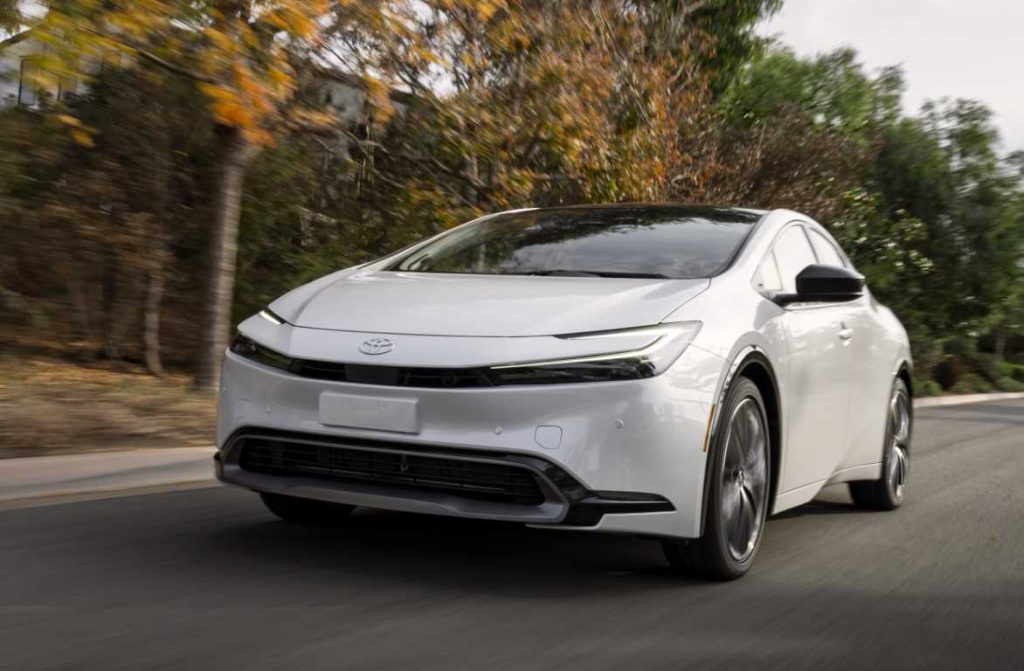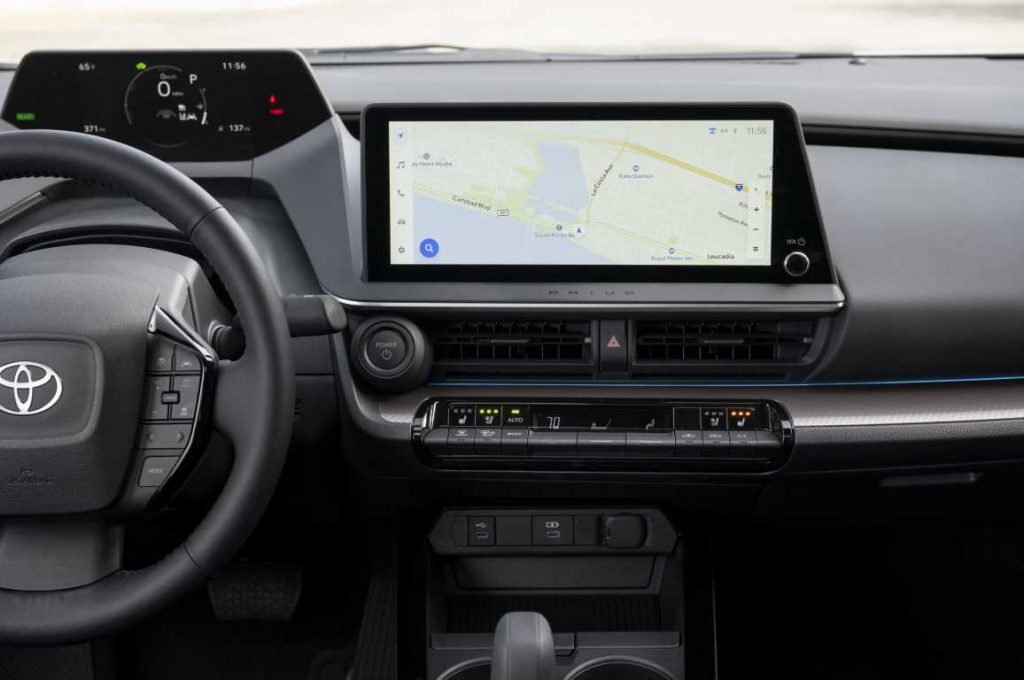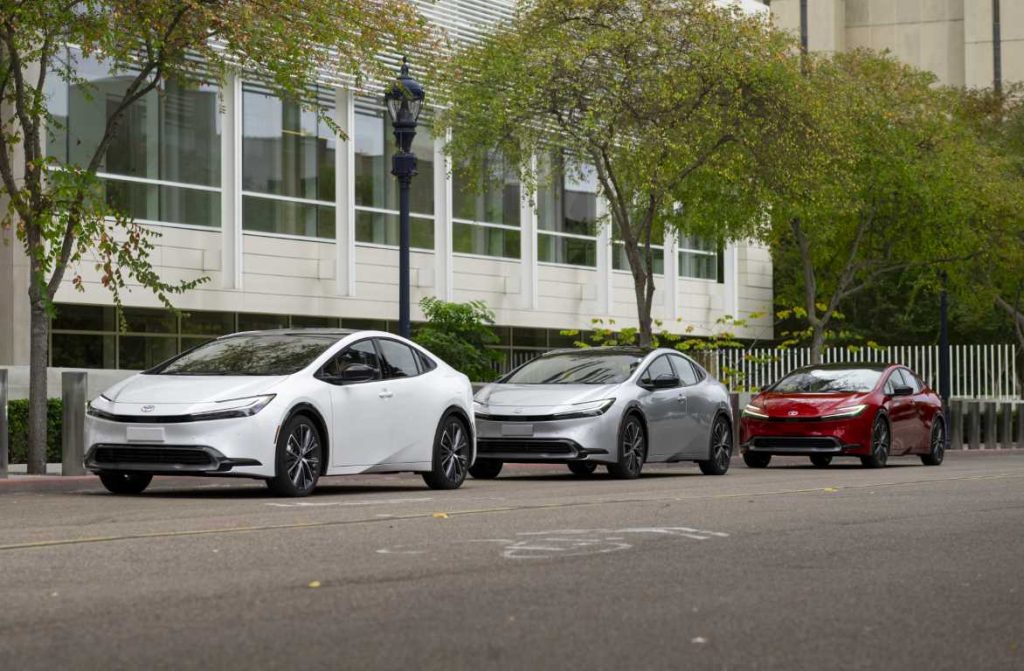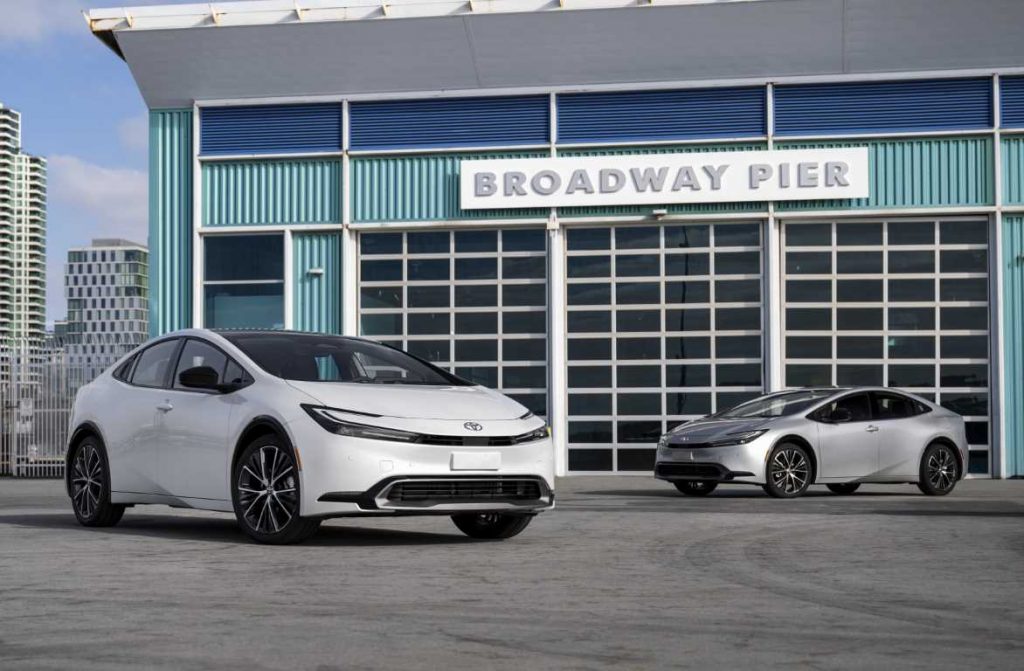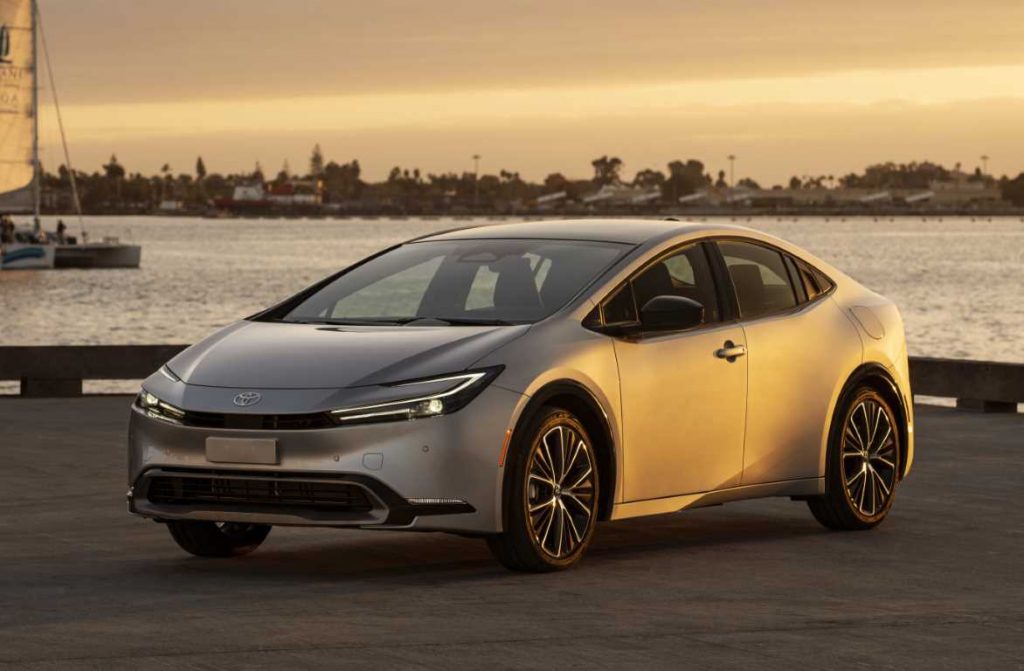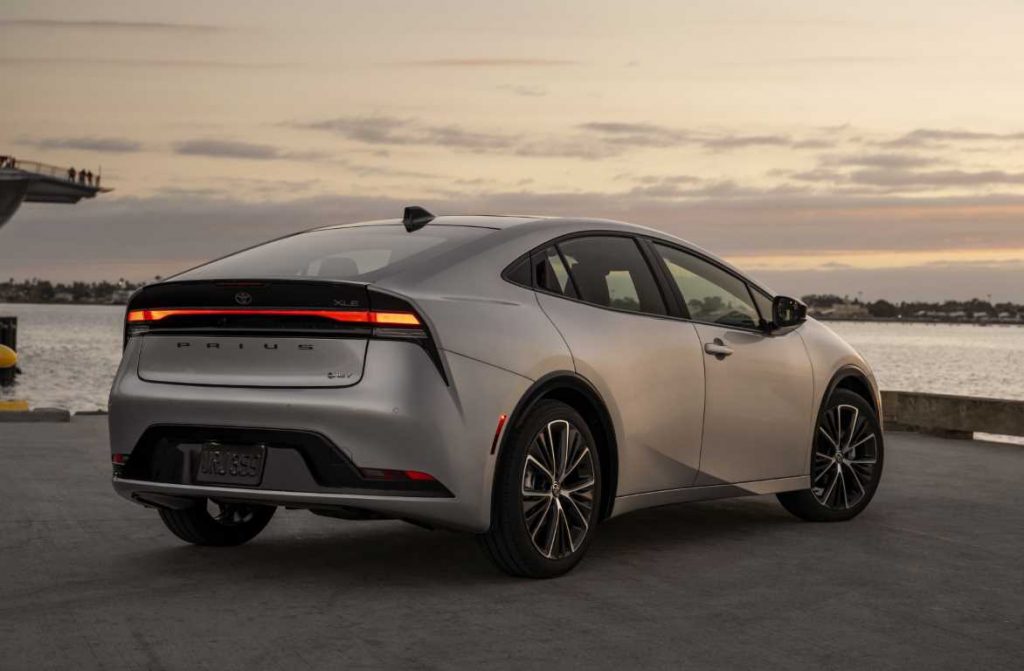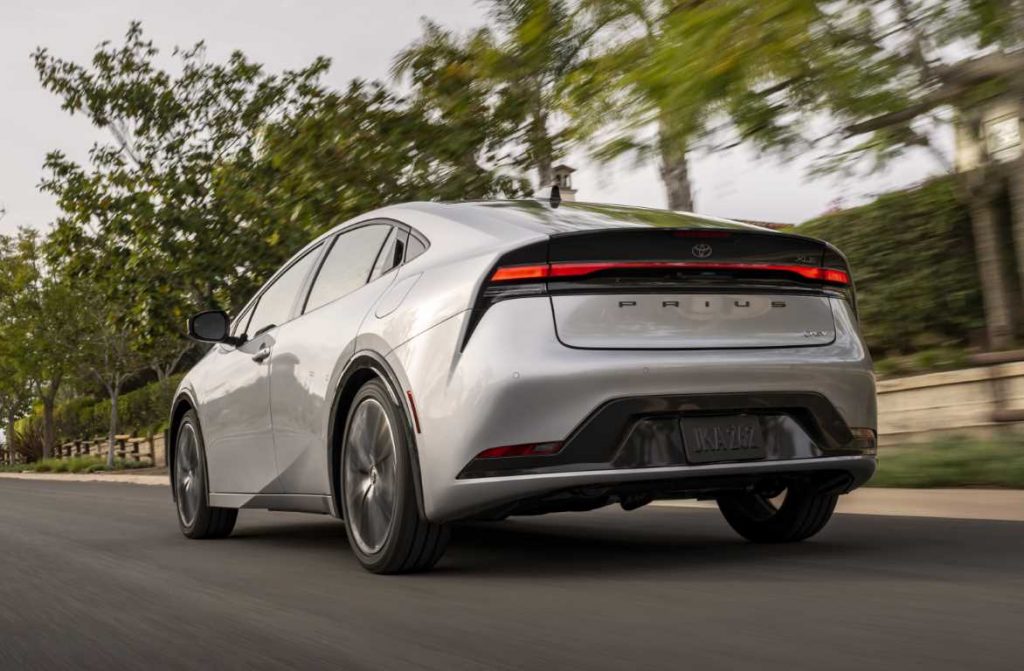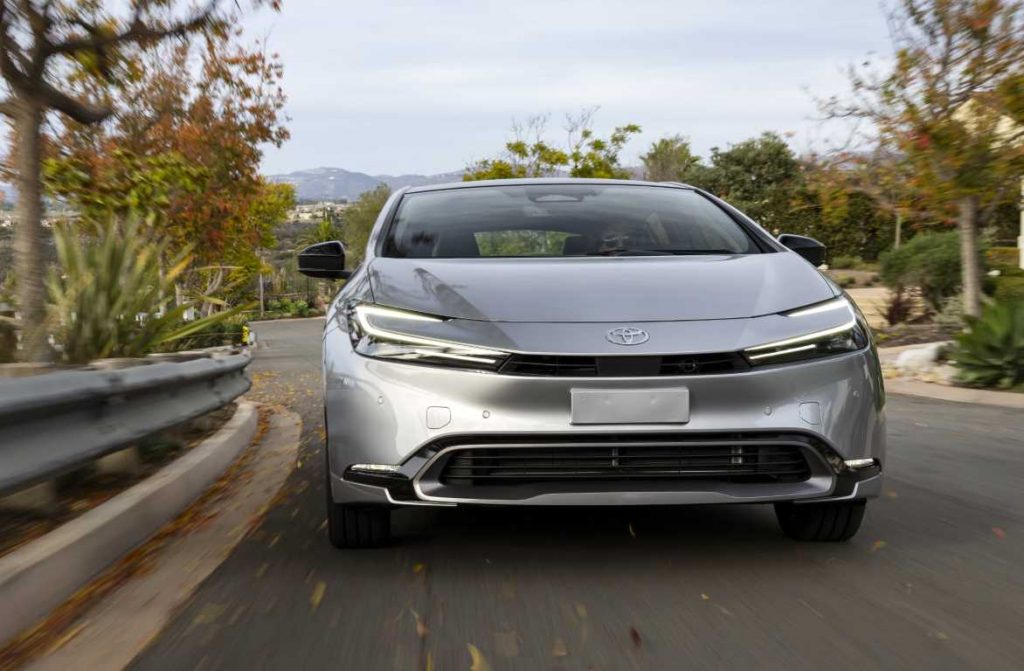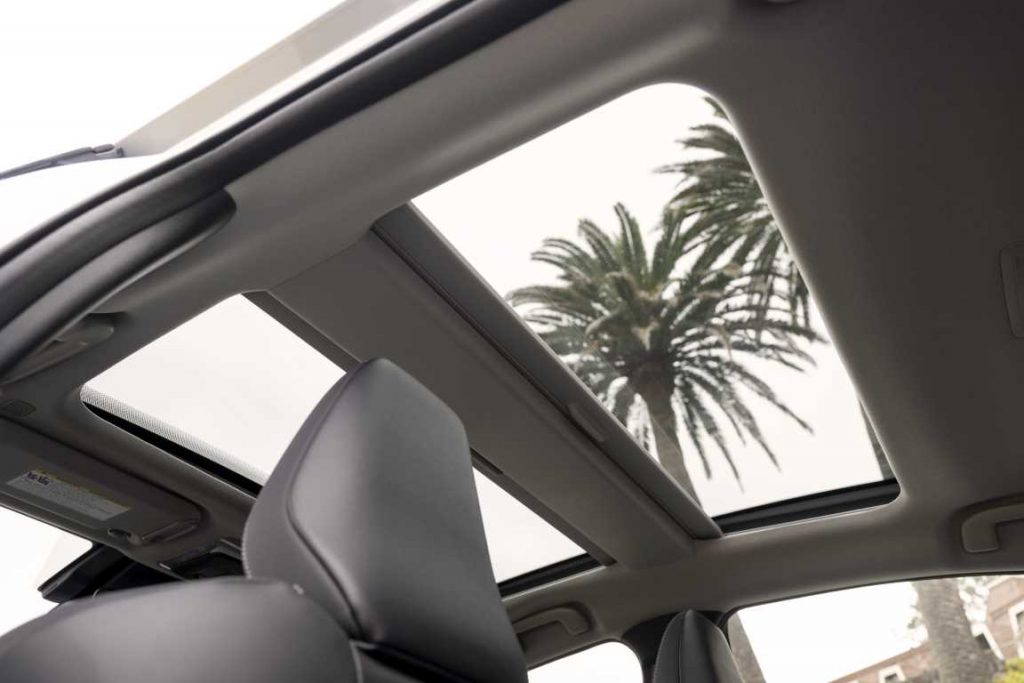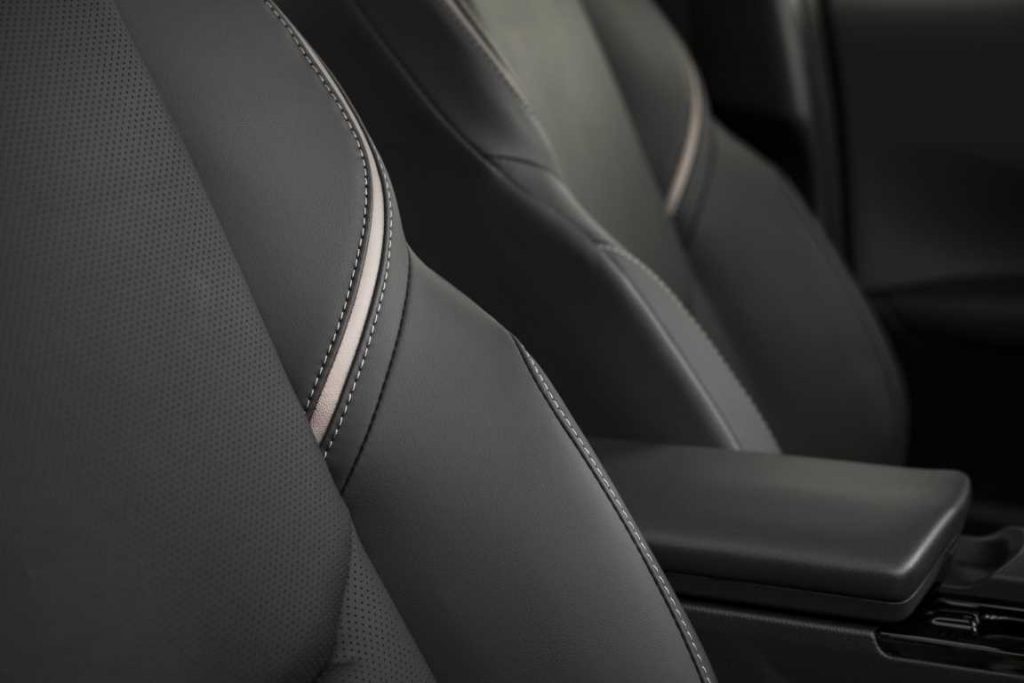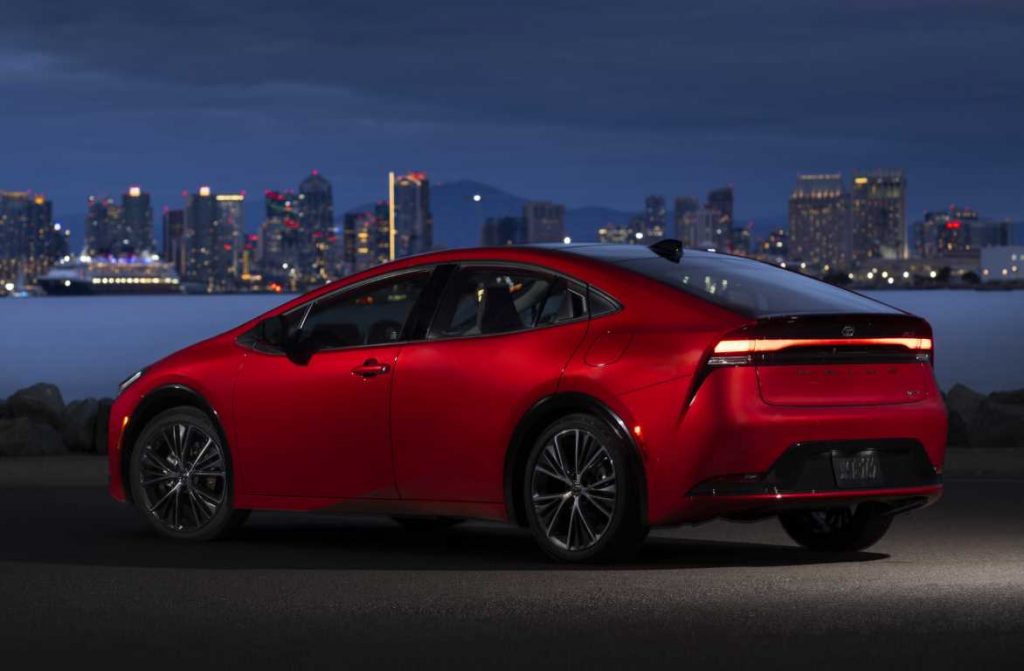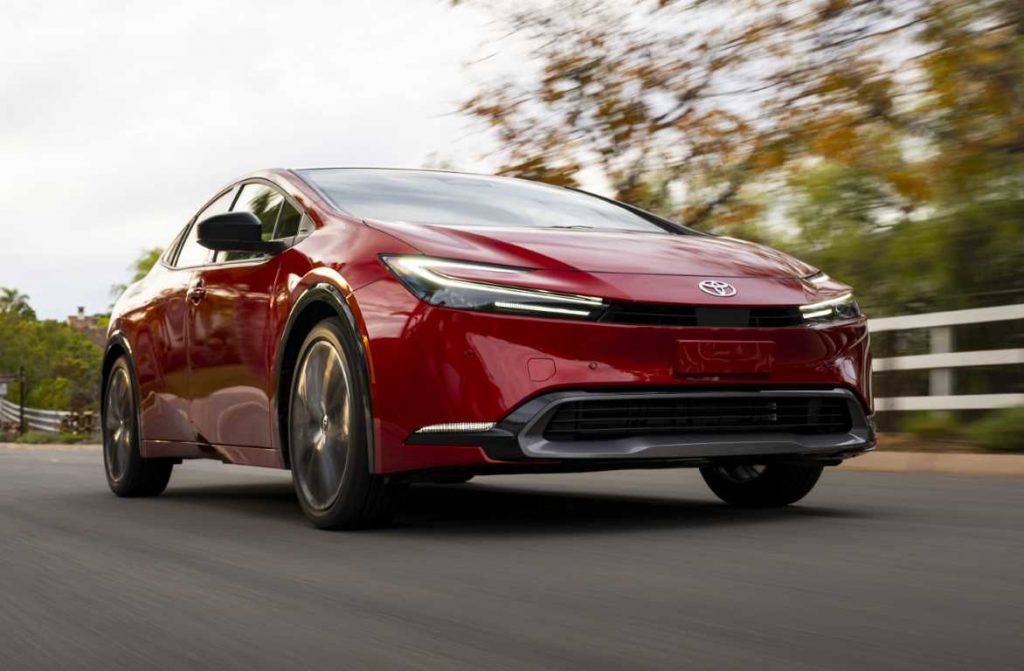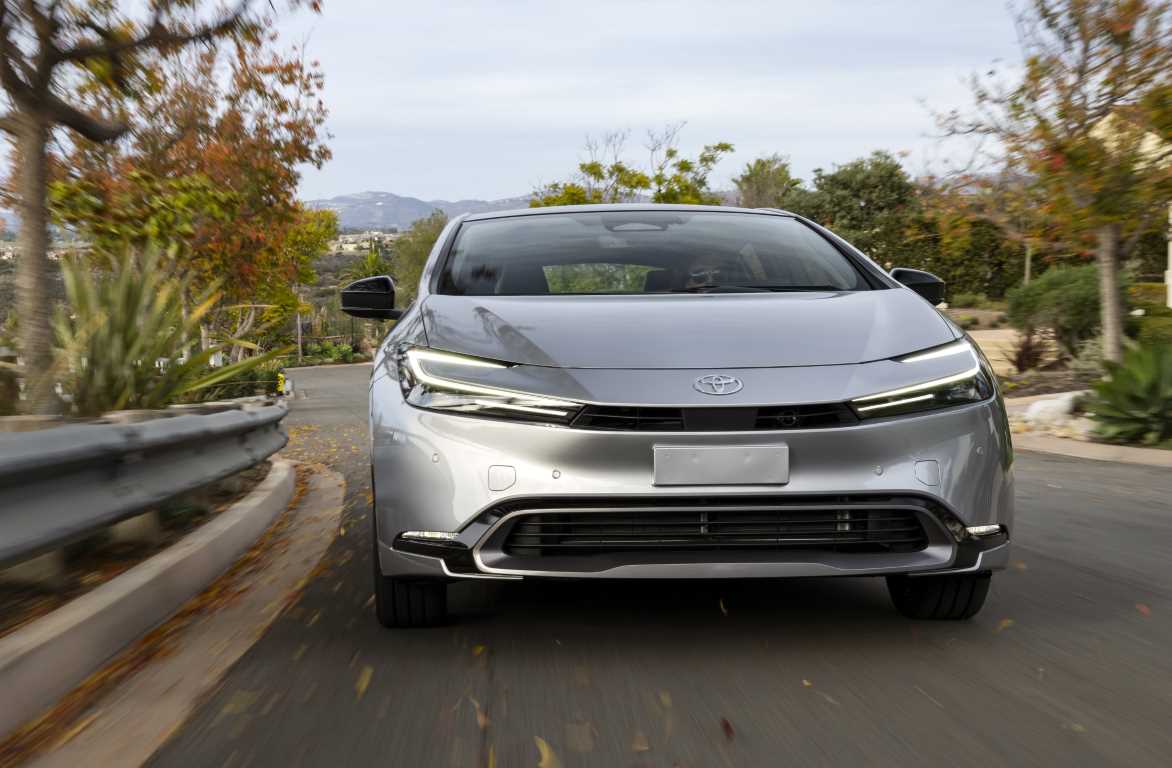The new Toyota Prius is about the arrive totally transformed for markets in 2023 and it’ll be sporting a heavily redesigned outlook that’s not only modern and futuristic but sportily appealing as well.
The brief about the latest Prius is not only will it be focussed on efficiency alone, but it will also provide a sporty performance as well while providing customers with a choice of either front-wheel-drive or all-wheel-drive (AWD) setups as it heads to the US for its debut in January, 2023.
For colour options, there will be six to choose from including Wind Chill Pearl, Cutting Edge (Silver), Guardian Gray, Midnight Black Metallic, Supersonic Red and Reservoir Blue.
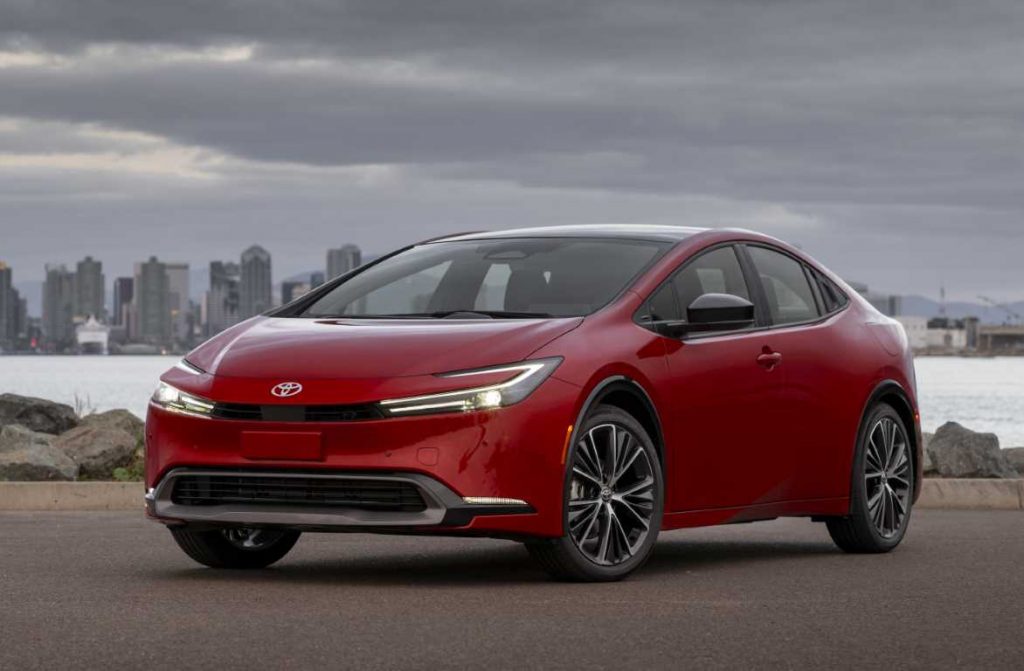
Improvements to its 2.0-litre M20A-FXS internal combustion engine and hybrid system see a considerable bump up in its combined systems output figures with an over 60% increase in horsepower and a 16% improvement in torque, boosting figures from 121hp in the outgoing version to 194hp (AWD – 196hp) while torque now twists out 188Nm instead of 163Nm previously.
The Japanese carmaker estimates new owners will be able to achieve a lowly 4.13 litres per 100km on the combined cycle for FWD variants with the AWD variant not far behind at 4.36 litres per 100km.
The AWD variant is said to benefit from a revision to its electric motors and their behaviour with the rear now producing 40hp from 7hp and a 50% increase in torque figures going from 56Nm to 84Nm.
Regardless, its new-found power figures will be managed by a planetary-type continuously variable transmission that will help it sprint from 0 to 100kph in a markedly improved estimated time of 7.2 seconds (FWD) compared to the previous generation’s FWD’s 9.8 seconds.
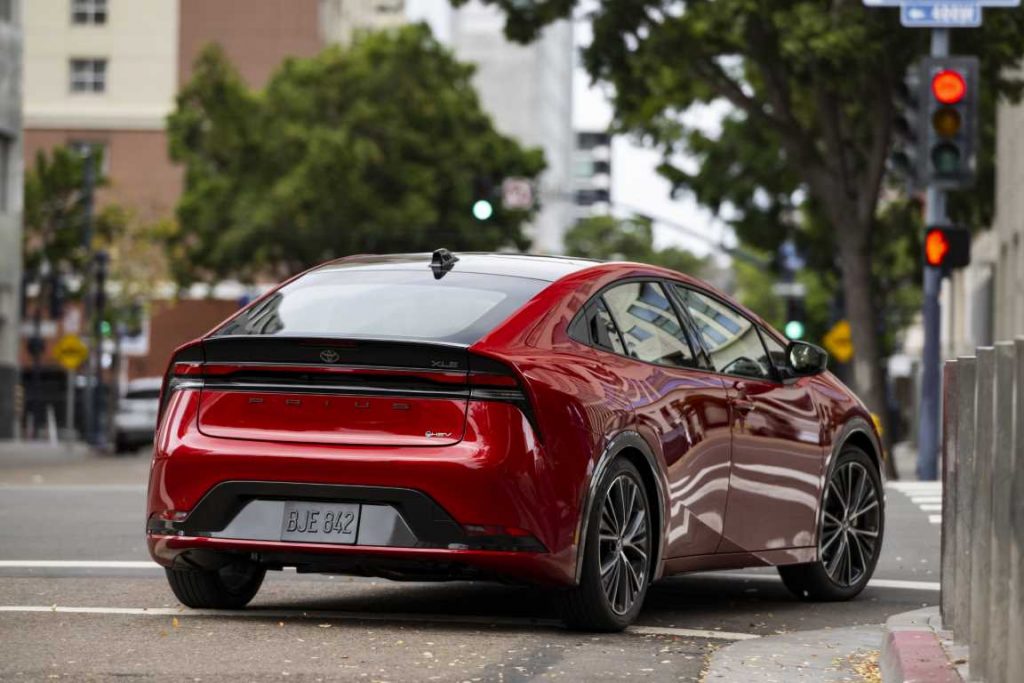
The Prius will be the first Toyota vehicle to wear a new “Beyond Zero” badge, symbolizing Toyota’s global effort to achieve carbon neutrality in its products and manufacturing processes, among others.
Built on the second-generation Toyota New Global Architecture (TNGA)-C platform, the Prius is touted to have been imbued with a lower centre of gravity, reduced weight and increased rigidity while posing with a wider stance and lower driving position for a nimble-yet-comfortable experience.
Its aerodynamically sleek new look comes mainly from its lowered roofline that’s been reduced by 2.0 inches while its posterior has been widened by nearly a full inch – lending it that ‘ready-to-launch’ look with an excellent drag-coefficient of just 0.27Cd.
Just like its previous generations, front grille shutters have been installed to optimize air inflow, contributing to cooling and aerodynamic performance. Aero-stabilizing underbody panels have also been installed to reduce drag and road noise.
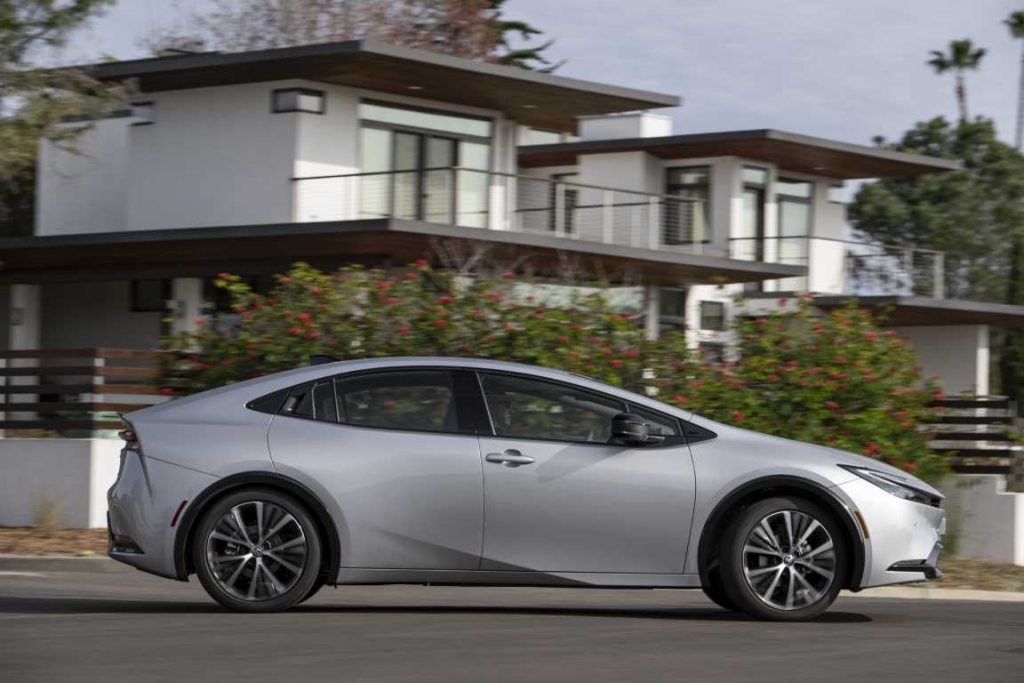
Wheels can be had in 19-inch alloys which partially hide the enlarged 11-inch brake rotors (up from 10 inches before) for the front and rear and will come equipped with Regenerative Braking system to help recoup some expended electrical energy back into its lithium-ion battery via the Electronically Controlled Brake (ECB) system.
The ECB helps coordinate the operation of the regenerative braking force between the electric motors and the hydraulic braking system for optimal stopping power while Brake Hold reduces driver braking efforts while in stop-go traffic situations. Pressing on the accelerator automatically disengages Brake Hold.
Although the battery will allow the new Prius to travel fully in Electric Vehicle (EV) mode, it also accords owners three driving modes of Normal, Eco and…Sport.
In Normal driving mode, the hybrid system is allowed to achieve an ideal combination of fuel economy and vehicle acceleration with a linear pedal feel while Eco mode simply limits this response further for better economy. Sport mode, however, simply allows for full unadulterated access to the Prius’ output.
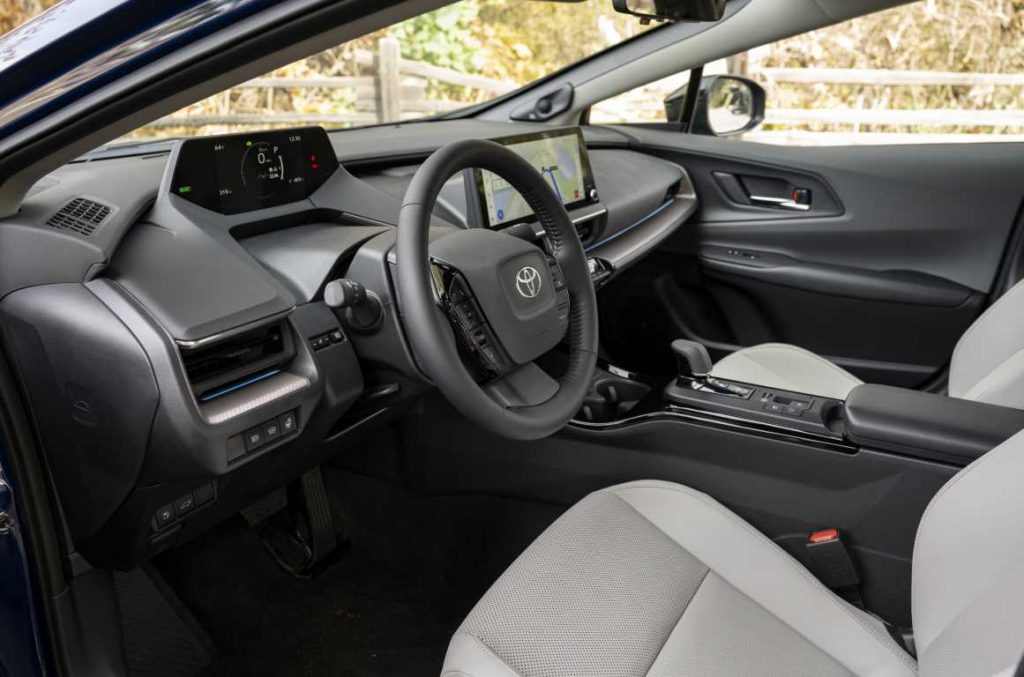
Inside, occupants will find the cabin feeling clean and modern with a new multi-information display mounted directly in front of the driver and (depending on variant), either a standard 8.0-inch or 12.3-inch JBL Premium Audio multimedia touchscreen display which powers up an eight-speaker sound system and provides connectivity for Bluetooth (two devices) and 4G (five devices) as well as wireless Apple CarPlay and Android Auto.
The multimedia system will include added functions such as Over-the-Air (OTA) updates, connected service drive connect,
Intelligent Assistant, Cloud Navigation and Destination Assist as well as “Hey Toyota” voice activation controls.
Utilising voice activation allows occupants to request for directions, points-of-interest (POI) as well as adjust audio controls and climate controls among others.
Cloud Navigation utilizes the cloud to download the latest available map, traffic and routing information. To ensure users have the most up-to-date search capabilities, POI search is provided by Google Points-of-Interest data. Destination Assist also gives access to 24/7 live agent assistance to locate the next destination.
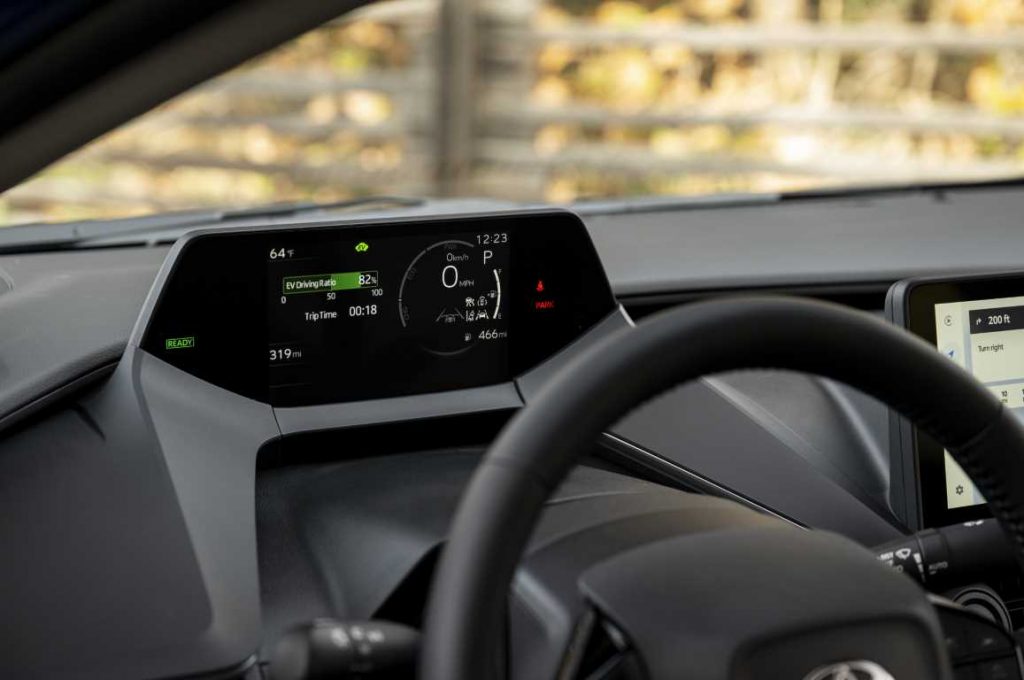
Drivers and passengers alike will enjoy increased comfort from improved seating construction with designers having enlarged the seating area before including a heating function as standard while cooling has been made an optional extra.
The seats will be upholstered in black or grey fabric with the front set getting six-way (passenger) and eight-way (driver) power adjustability.
Additional features for the Prius can include six USB-C ports, electronic parking brake, man-made SofTex-wrapped steering wheel, blind spot monitoring system with rear cross-traffic alert, front and rear parking assist with automatic braking, automatic wipers, a smart key system, wireless charger, panoramic glass roof and a digital key.
A powered tailgate can also be had, along with a 360-degree camera view system, digital rearview mirror, automated parking system (parallel and perpendicular).
With the Toyota app, users will be able to remotely activate the headlights, lock/unlock the doors, start the vehicle, check vehicle status, receive reminders and notifications and set Guest Driver Alerts – all from the convenience of a smartphone.
For safety, each Prius is equipped with Service Connect. Here, it includes Safety Connect which provides access to an Emergency Assistance Button (SOS), 24/7 Enhanced Roadside Assistance, Automatic Collision Notification and Stolen Vehicle Locator with up to a 10-year trial in the US. Service Connect provides drivers the ability to receive Vehicle Health Reports, Maintenance Alerts and reminders (also with a 10-year trial).
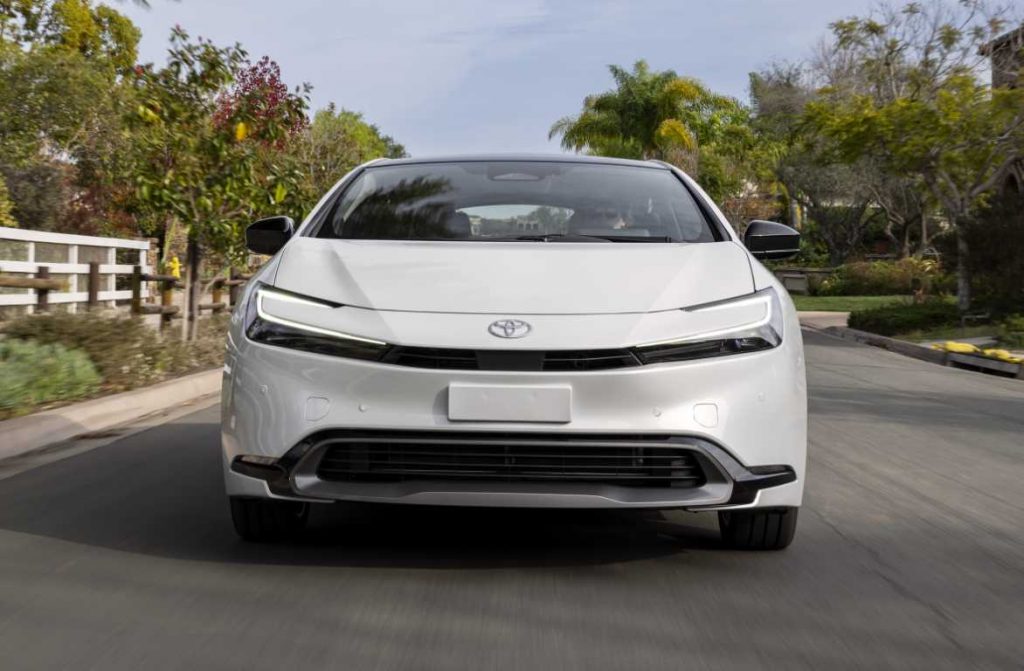
Safe Exit Assist is also available and helps to detect vehicles and bicycles approaching from the rear before alerting an occupant when they exit the vehicle to help avoid or mitigate collisions with the door.
Best of all, the latest Prius will be equipped with latest Toyota Safety Sense generation 3.0 (TSS 3.0). This suite of active safety systems includes the existing feature set available on the prior generation Prius but includes some additional enhancements and capabilities.
New to TSS 3.0 is proactive driving assist which when system operating conditions are met, using the vehicle’s camera and radar, it provides for some gentle braking around curves and/or steering angle to help support its driver with distance control between a preceding vehicle, pedestrian or bicyclist.
However, Toyota reiterates that this system is not a substitute for its Pre-Collision System and operates under different circumstances while also having been enhanced with better detection capabilities via its new system sensors. It also adds the ability to detect motorcyclists, bicyclists and pedestrians.
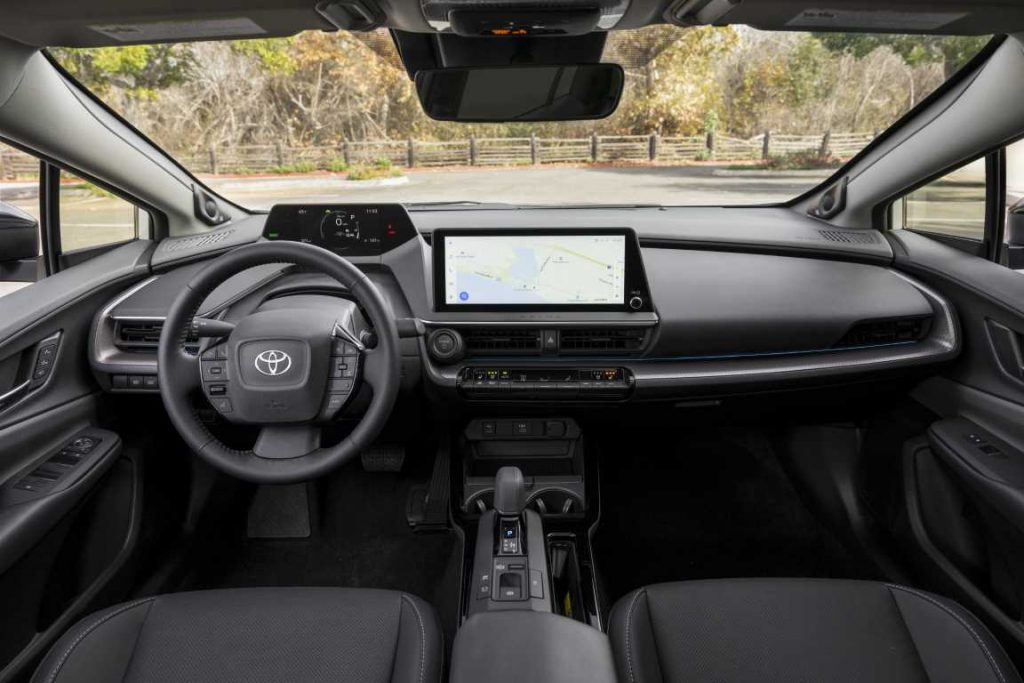
Lane Departure Alert with Steering Assist has enhanced lane recognition that includes the detection of certain 3D objects such as guardrails which can be used to help define the lane.
The Full-Speed Range Dynamic Radar Cruise Control adds a fourth following distance setting, from the previously available three. Enhanced vehicle detection allows for the ability to detect more than one preceding vehicle, as well as vehicles in adjacent lanes.
This helps the system to provide smoother, more natural speed adjustments, especially when the driver changes lanes.
Like Lane Departure Alert, lane recognition is enhanced for Lane Tracing Assist. This system now also helps provide more space between vehicles being passed in adjacent lanes by offsetting the vehicles’ driving path with minor steering adjustments while keeping the vehicle within its lane.
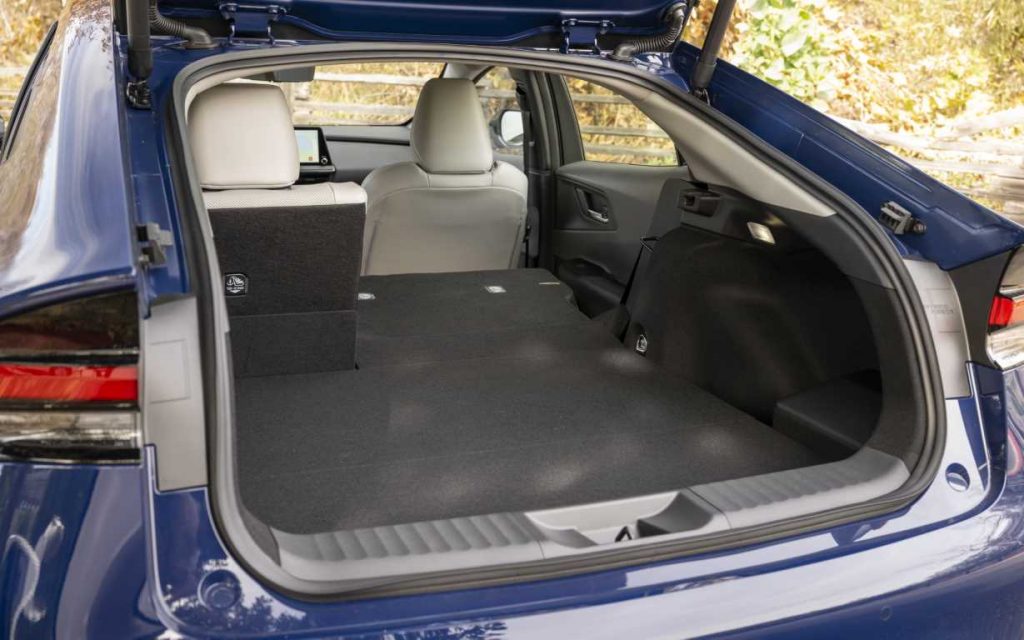
An Emergency Driving Stop System has also been added to Lane Tracing Assist. It has been designed to monitor the driver’s inputs, such as steering operation, to determine if they’re inattentive or non-responsive, such as during a medical emergency.
This feature can bring the vehicle to a stop if the driver doesn’t respond to alerts to take control.
Finally, Road Sign Assist gets its sign detection capabilities expanded to now include certain intersection signs and warning signs such as pedestrian crossings.
